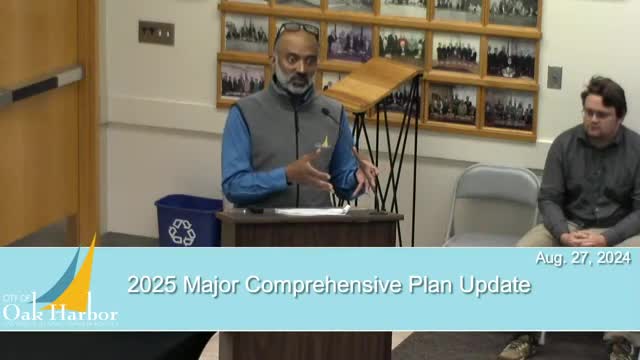City faces housing crisis as demand outstrips capacity
August 28, 2024 | Oak Harbor, Island County, Washington
This article was created by AI summarizing key points discussed. AI makes mistakes, so for full details and context, please refer to the video of the full meeting. Please report any errors so we can fix them. Report an error »

In a recent government meeting, officials discussed the pressing challenges of housing allocation in Island County, particularly focusing on the need for affordable units. The county has been tasked with accommodating approximately 8,700 housing units, with a significant emphasis on low-income brackets, specifically those earning between zero to 50% of the area median income (AMI).
Current zoning regulations have been identified as a major barrier to meeting these needs. Officials noted that while there is capacity for additional single-family homes, these units do not cater to the lower income brackets, which are critical for community support. The average AMI in Oak Harbor is reported to be around $102,000, highlighting the disparity between income levels and available housing options.
The meeting revealed that the city has a capacity for 2,474 units based on existing zoning, leaving a shortfall of 3,059 units needed to meet state requirements. This deficit is particularly pronounced in the zero to 80% AMI range, where the city is struggling to find suitable land for development.
Officials emphasized the importance of collaboration with the county to address these challenges, particularly regarding the Urban Growth Area (UGA) and how growth is managed outside city limits. The conversation around accommodating growth within the city and the UGA remains unresolved, with further discussions anticipated once the current housing capacity analysis is completed.
The meeting concluded with a call to action for identifying specific zones where affordable housing can be developed, as well as a commitment to continue exploring solutions to bridge the significant gap in housing availability for lower-income residents.
Current zoning regulations have been identified as a major barrier to meeting these needs. Officials noted that while there is capacity for additional single-family homes, these units do not cater to the lower income brackets, which are critical for community support. The average AMI in Oak Harbor is reported to be around $102,000, highlighting the disparity between income levels and available housing options.
The meeting revealed that the city has a capacity for 2,474 units based on existing zoning, leaving a shortfall of 3,059 units needed to meet state requirements. This deficit is particularly pronounced in the zero to 80% AMI range, where the city is struggling to find suitable land for development.
Officials emphasized the importance of collaboration with the county to address these challenges, particularly regarding the Urban Growth Area (UGA) and how growth is managed outside city limits. The conversation around accommodating growth within the city and the UGA remains unresolved, with further discussions anticipated once the current housing capacity analysis is completed.
The meeting concluded with a call to action for identifying specific zones where affordable housing can be developed, as well as a commitment to continue exploring solutions to bridge the significant gap in housing availability for lower-income residents.
View full meeting
This article is based on a recent meeting—watch the full video and explore the complete transcript for deeper insights into the discussion.
View full meeting
